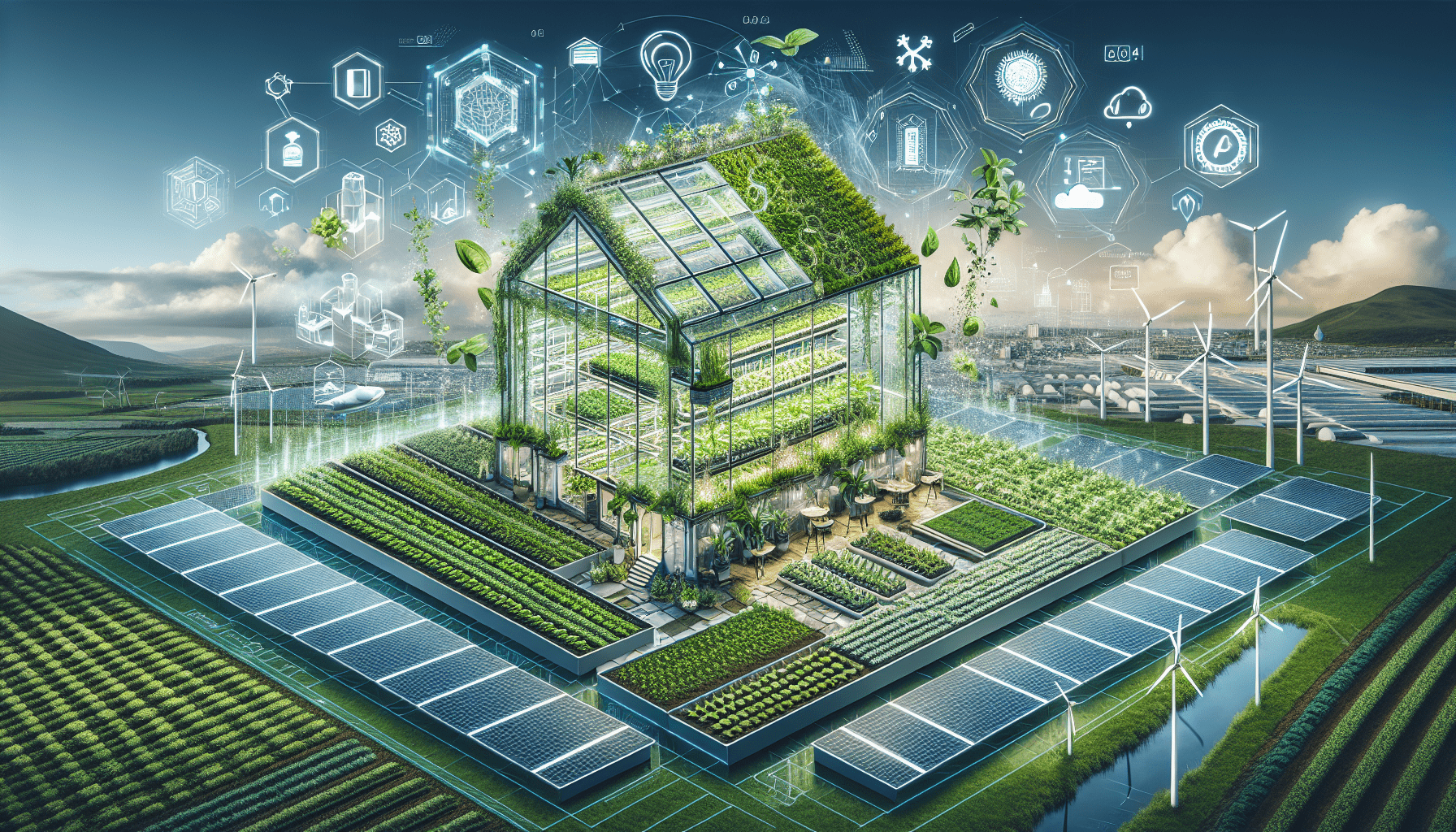Imagine a world where agriculture is not only plentiful but also sustainable, where farms exist in harmony with the environment and produce healthy, nutritious crops without harming the planet. This is the future being shaped by innovative sustainable agriculture technologies. From precision farming and vertical farming to hydroponics and AI-driven crop monitoring, these emerging technologies are revolutionizing the way we grow food. In this article, we will explore the exciting advancements in sustainable agriculture technologies and how they are paving the way for a greener and more efficient future in food production.
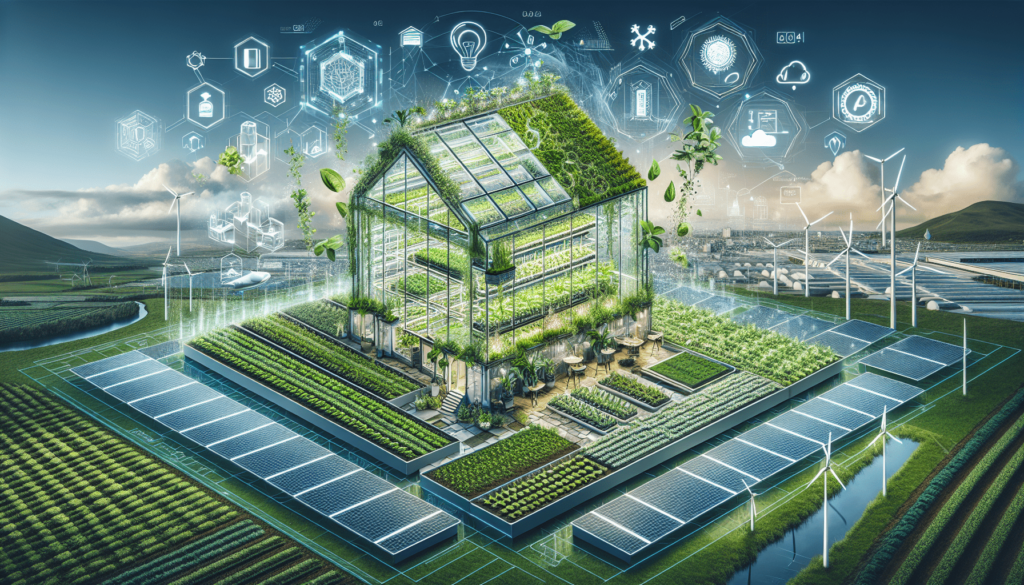
Precision Farming
Precision farming is a cutting-edge technology that aims to maximize efficiency and productivity in agriculture by utilizing remote sensing and GIS (Geographical Information System) technology. With remote sensing, farmers can gather data about their fields from a distance. By using satellites, drones, and other sensors, farmers can monitor crop health, soil conditions, and weather patterns. This data is then combined with GIS technology, which helps in creating accurate maps and analyzing the information gathered. By implementing precision farming techniques, farmers can make more informed decisions about planting, fertilizing, and watering, leading to reduced resource waste and increased yields.
Another important aspect of precision farming is the use of Variable Rate Technology (VRT). VRT allows farmers to apply inputs like fertilizers and pesticides in varying amounts across different parts of their fields. By using advanced sensors and GPS technology, VRT ensures that the right amount of inputs is applied to specific areas. This not only improves efficiency but also reduces environmental impacts and costs. With VRT, farmers can tailor their crop management practices to individual field conditions, optimizing the use of resources while minimizing potential negative effects.
Automated machinery is another key component of precision farming. With the advent of robotics and artificial intelligence, farmers can now rely on automated machines to handle various tasks on the farm. These machines can accurately perform activities like planting, spraying, and harvesting, freeing up farmers’ time and reducing the need for manual labor. Automated machinery also improves precision, as machines can operate with minimal human error and optimize resource usage. By implementing automated machinery, farmers can streamline their operations, increase productivity, and reduce their environmental footprint.
Vertical Farming
Vertical farming is an innovative approach to agriculture that involves the cultivation of crops in vertically stacked layers or structures. This method allows for the efficient use of space, making it ideal for urban environments and areas with limited arable land. Hydroponics, a subcategory of vertical farming, involves growing plants in nutrient-rich water without soil. By providing plants with the necessary nutrients directly, hydroponics eliminates the need for traditional soil-based cultivation. This technique not only saves water but also allows for year-round production and maximizes crop yield.
Aeroponics is another vertical farming technique that involves growing plants in an air or mist environment without the use of soil or water. Instead, plant roots are suspended in air and periodically misted with nutrient-rich water. Aeroponics provides optimal growing conditions for plants and is known for its high crop yield and fast growth rates. This method also reduces water usage compared to traditional cultivation methods.
Aquaponics combines aquaculture (the farming of fish) with hydroponics. It is a symbiotic system where fish waste provides nutrients for plant growth, while the plants filter and clean the water for the fish. This closed-loop system minimizes water waste and provides a sustainable method of food production. Vertical farming techniques such as hydroponics, aeroponics, and aquaponics offer innovative solutions to the challenges of traditional farming, allowing for increased productivity, resource conservation, and year-round cultivation.
Smart Irrigation
Smart irrigation technologies play a crucial role in sustainable agriculture by optimizing water usage and conserving this precious resource. Soil moisture monitoring is a key component of smart irrigation systems. By using sensors placed in the soil, farmers can accurately measure the moisture content and determine when and how much water to provide. This helps in preventing over-irrigation and reduces water wastage, as water is only applied when needed.
Weather-based irrigation is another important aspect of smart irrigation. By incorporating weather data and forecasts into irrigation systems, farmers can adjust their watering schedules based on rainfall, temperature, humidity, and other environmental factors. This ensures that crops receive the appropriate amount of water and reduces the reliance on manual decisions, saving water and minimizing the risk of under or over-watering.
Drip irrigation is a widely adopted smart irrigation technique that delivers water to plants at a slow and steady rate. Through a system of tubes and emitters, water is directly applied to the root zone of plants. This method not only reduces water loss due to evaporation but also ensures that water reaches the plants’ roots efficiently, minimizing runoff and optimizing water use. Drip irrigation offers improved water efficiency and is especially beneficial in arid regions or areas with limited water resources.
Biotechnology
Biotechnology has revolutionized agriculture by introducing innovative approaches to crop production and pest management. Genetically Modified (GM) crops are one such example. Through the use of genetic engineering techniques, scientists can enhance crop traits, such as resistance to pests, diseases, and environmental stressors. GM crops have the potential to increase yields, reduce chemical pesticide usage, and improve nutritional content. By developing crops with desirable traits, biotechnology contributes to a more sustainable and resilient agricultural system.
Biopesticides are another biotechnological solution that offers effective pest control while minimizing environmental impacts. Derived from naturally occurring substances like plants, fungi, or bacteria, biopesticides target specific pests, leaving beneficial insects unharmed. Unlike synthetic chemical pesticides, biopesticides have low toxicity and degrade rapidly in the environment, reducing the potential for long-term harm to ecosystems.
Phytoremediation is an emerging biotechnological technique that utilizes plants to clean up contaminated soils, water, and air. Certain plant species have the ability to absorb and accumulate pollutants, effectively remediating polluted sites. Phytoremediation offers a cost-effective and environmentally friendly approach to soil and water remediation, transforming contaminated areas into productive land.
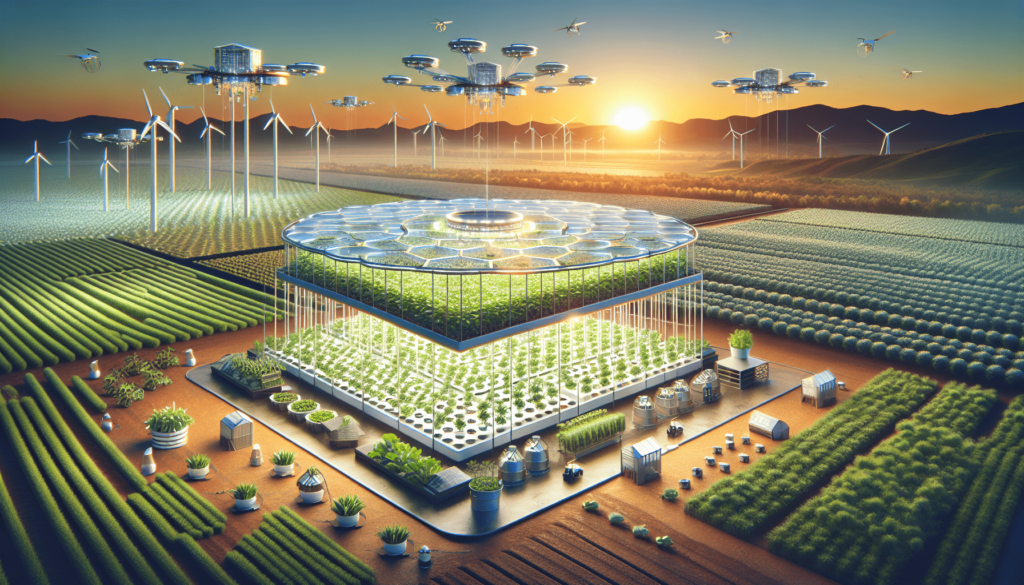
Robotics
Robotics is transforming agriculture by automating labor-intensive tasks and improving precision. Autonomous harvesting robots are being developed to pick fruits and vegetables with precision and efficiency. These robots are equipped with advanced sensors and algorithms that enable them to identify ripe produce and harvest it without causing damage. By reducing reliance on manual labor, autonomous harvesting robots offer increased productivity and reduced costs for farmers.
Weeding robots are another example of robotic technology in agriculture. These robots use cameras and artificial intelligence to identify and remove unwanted weeds, eliminating the need for herbicides and manual labor. By targeting weeds specifically, weeding robots enable more efficient and sustainable weed control, resulting in healthier crops and reduced environmental impacts.
Robotic pollinators are being developed to address the decline in natural pollinators like bees. These robots mimic the behavior of bees or other pollinators, transferring pollen from flower to flower to ensure successful fertilization. With the ability to work day and night, these robotic pollinators offer an innovative solution to ensure sufficient pollination and maintain crop yields in the face of declining bee populations.
Blockchain Technology
Blockchain technology is revolutionizing the way food supply chains operate, offering increased transparency and traceability. By using a decentralized and tamper-proof ledger system, blockchain enables farmers, suppliers, and consumers to track the journey of food products from farm to plate. This transparency reduces the potential for fraud, ensures food safety, and allows consumers to make more informed choices about the origin and quality of their food.
In addition to transparency, blockchain technology also offers the potential for the use of smart contracts in agricultural transactions. Smart contracts are self-executing contracts with the terms of the agreement written into code. By integrating smart contracts into agricultural systems, farmers can streamline transactions, automate payments, and reduce the need for intermediaries. This not only simplifies the process but also ensures fair and prompt compensation for farmers.
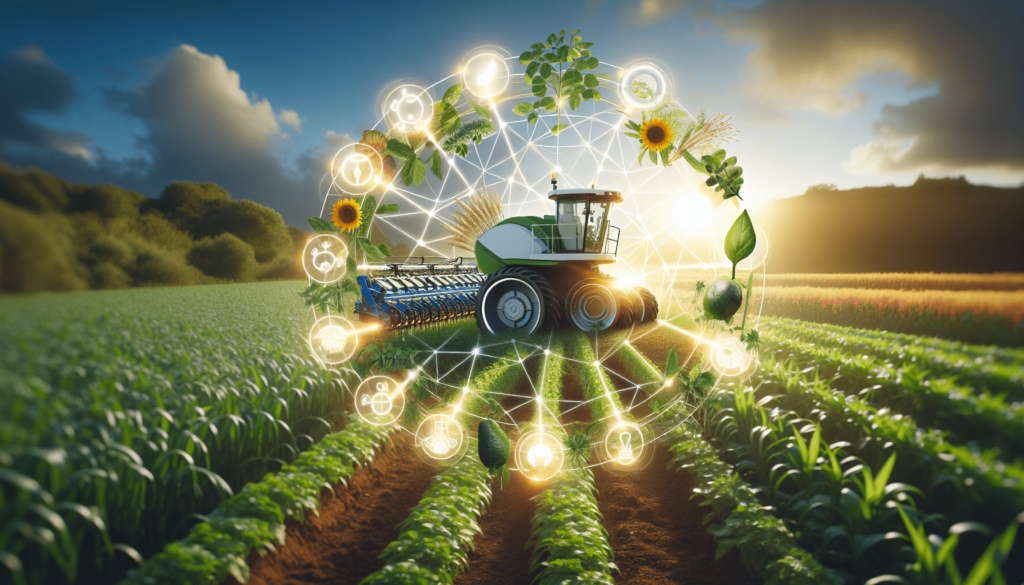
Alternative Energy Sources
The adoption of alternative energy sources in agriculture is essential for reducing greenhouse gas emissions and reliance on fossil fuels. Solar power is one of the most widely adopted renewable energy sources in agriculture. Solar panels installed on farms can capture sunlight and convert it into electricity, providing a sustainable and clean source of energy. Solar power can be used to power irrigation systems, machinery, and other farm operations, reducing dependence on traditional energy sources.
Wind power is another viable alternative energy source. Wind turbines can be installed on farms to capture wind energy and convert it into electricity. In areas with consistent wind patterns, wind power can provide a significant portion of a farm’s energy needs, making farming operations more sustainable and environmentally friendly.
Biogas, produced through anaerobic digestion of organic waste, is another alternative energy source gaining popularity in agriculture. By collecting and processing animal manure and crop residues, biogas digesters can generate methane-rich biogas. This biogas can be used as a renewable energy source for heating, electricity generation, or powering machinery. Biogas not only reduces greenhouse gas emissions but also offers a way to manage organic waste more effectively.
Data Analytics
Data analytics plays a crucial role in sustainable agriculture by providing valuable insights and predictive modeling. Machine learning algorithms can analyze large datasets to identify patterns, optimize resource allocation, and improve farm management practices. By analyzing historical and real-time data, machine learning algorithms can predict crop yields, pest outbreaks, and other factors important for decision-making. This enables farmers to make informed decisions and implement proactive measures to mitigate risks and improve crop health.
Predictive modeling is another application of data analytics that allows farmers to anticipate potential outcomes based on available data. By considering various factors like weather conditions, soil moisture, and crop health, predictive models can help in optimizing planting schedules, predicting pest or disease outbreaks, and identifying the best irrigation practices. By leveraging data analytics and predictive modeling, farmers can make more accurate and timely decisions, leading to improved crop productivity and resource management.
Crop health monitoring is an important aspect of data analytics in agriculture. By using remote sensing technologies, such as drones and satellites, farmers can gather detailed and real-time information about their crops’ health. Multispectral and thermal sensors can detect early signs of stress, disease, or nutrient deficiencies, allowing farmers to take proactive measures and address issues before they significantly impact crop yields. Crop health monitoring enables precise interventions and targeted resource allocation, optimizing crop productivity and reducing input waste.
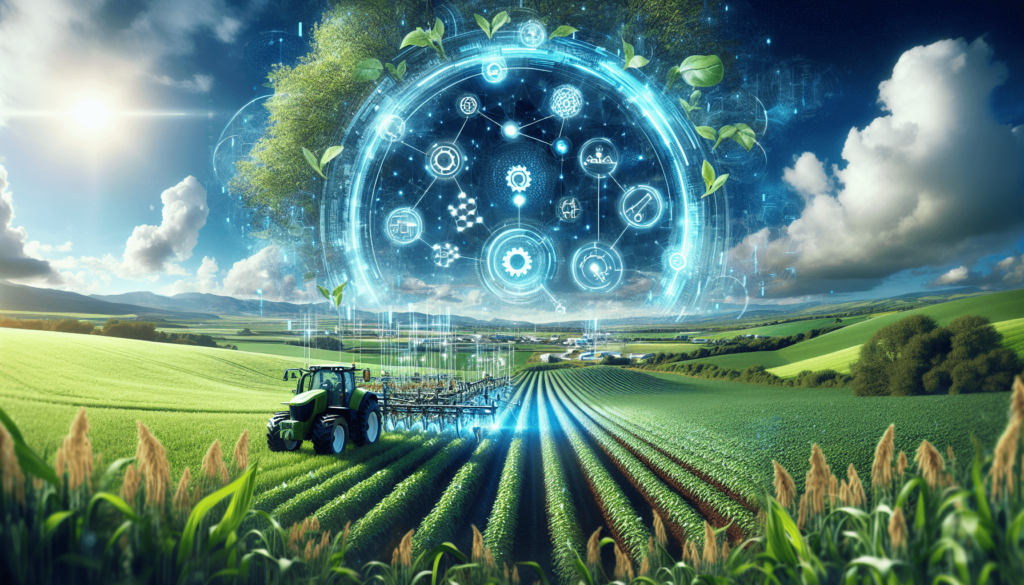
Indoor Farming
Indoor farming, also known as Controlled Environment Agriculture (CEA), involves growing crops in controlled environments such as greenhouses or vertical farms. By closely controlling factors like temperature, humidity, light, and nutrient levels, indoor farming provides optimal growing conditions for crops. LED grow lights are a key component of indoor farming systems, as they provide precise and efficient lighting for crop growth. LED lights can be tailored to provide specific light spectra for different growth stages, enhancing photosynthesis and promoting plant growth. In addition, LED lights are energy-efficient and have a longer lifespan than traditional lighting sources, reducing energy costs and environmental impact.
Climate control systems are another crucial element of indoor farming. These systems automate and monitor environmental conditions such as temperature, humidity, and CO2 levels to create ideal growing conditions. By maintaining stable and optimized environmental parameters, indoor farming ensures consistent crop quality, reduces the risk of pests and diseases, and enables year-round cultivation. The controlled environment also offers protection from extreme weather events, ensuring a stable food supply.
Indoor farming offers numerous benefits over traditional outdoor farming methods. It allows for year-round cultivation, reduced water usage, protection from pests and diseases, and efficient land utilization. Additionally, indoor farming can be established in urban areas, reducing the need for long transportation routes and providing fresh produce to local communities.
Sustainable Farming Practices
Sustainable farming practices are essential for preserving the health of ecosystems, enhancing soil fertility, and ensuring long-term food security. Crop rotation is a sustainable agricultural practice that involves growing different crops in a sequence on the same piece of land. This practice helps in breaking pest and disease cycles, optimizing nutrient usage, and reducing soil erosion. By diversifying crops and rotating them, farmers can improve soil quality and productivity while minimizing reliance on synthetic fertilizers and pesticides.
Cover crops are another sustainable farming practice that involves planting crops, usually in fallow periods, to cover and protect the soil. Cover crops help in reducing erosion, improving soil structure, suppressing weeds, and enhancing nutrient cycling. They also increase soil organic matter, promote beneficial soil organisms, and provide habitat for beneficial insects. By incorporating cover crops into their rotations, farmers can improve soil health and reduce the need for chemical inputs.
Integrating livestock into farming systems is another sustainable practice that offers numerous benefits. Livestock can graze on cover crops or crop residues, providing natural fertilizer and reducing the need for synthetic fertilizers. The manure generated by livestock can be used as a nutrient-rich organic fertilizer, enriching the soil and promoting nutrient cycling. Additionally, the integration of livestock diversifies farm income and creates a more resilient and sustainable agricultural system.
By adopting sustainable farming practices, such as crop rotation, cover cropping, and integrating livestock, farmers can improve soil health, reduce resource use, and build resilient farming systems that benefit both the environment and human well-being.
In conclusion, sustainable agriculture technologies are revolutionizing the way we produce food, ensuring a more efficient, environmentally friendly, and resilient agricultural system. Precision farming techniques, vertical farming, smart irrigation, biotechnology, robotics, blockchain technology, alternative energy sources, data analytics, indoor farming, and sustainable farming practices offer innovative solutions to the challenges of traditional agriculture. By embracing these technologies and practices, we can work towards a future where agriculture is sustainable, productive, and able to meet the needs of a growing global population.

